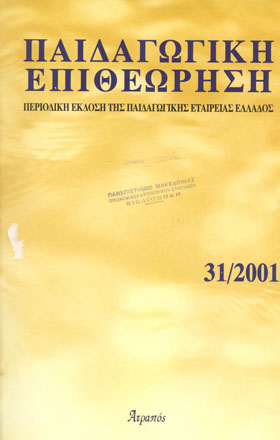Η ανάπτυξη των γνώσεων για τη διαστρωμάτωση και σύσταση του εσωτερικού της γής - Επιπτώσεις στη διδασκαλία
Main Article Content
Περίληψη
The purpose of the research presented here is to investigate students' understanding the layering and composition of the interior of the earth. We also wanted find out whether the theoretical framework of conceptual change developed by Vosniadou and Brewer (Vosniadou -Brewer. 1992) can be used to explain the students' responses. 120 students in first, fourth, sixth, eleventh grade, as well as University undergraduate’s students in Primary education was used in οour results show that the younger children seem to believe that the earth's interior consists of simple, solid material in a flat arrangement. The representation of earth's interior which was more common in the drawings of the oldest students was that of magma in the low strata of the earth in flat arrangement or that of magma in the core of the earth in spherical arrangement, The category which was close to scientific one, was that of magma in the core of the earth and in the area οur research support the Vosniadou and Brewer (1992) proposal that the children from an initial explanatory framework which changes, in a gradual way .The results also show there is a sequence in the understanding of certain key ideas related to the layering and composition of the earth. For example, it appears that children mast understand the spherical shape of the earth before representing the inside of the earth in spherical layers and must acquire an understanding of gravity before they place the magma in the center of the earth. The above results should be taken into account in the planning of curricula and instructor for elementary and high school classes.
Article Details
Τεύχος
Ενότητα
Άρθρα
